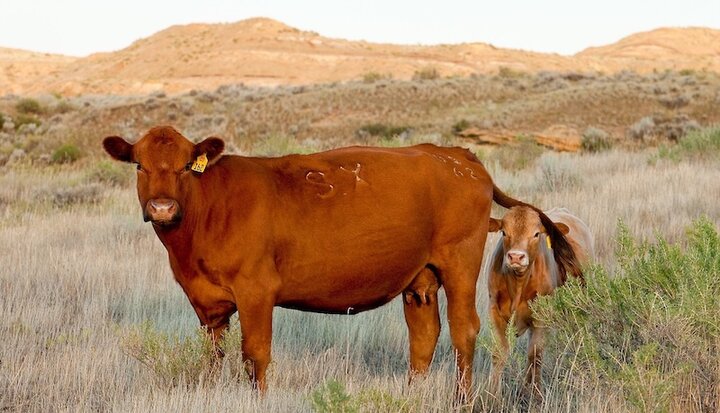Due to the recent severe weather, many cow-calf producers have a significant number of first-calf heifers or cows that have lost calves this spring. The following are things to evaluate and think through in making decisions regarding what to do with these cows.
Options with cows that have lost calves:
- Keep and expose cows to rebreeding for spring calving in 2020.
- Put weight on and sell as cull cows later this spring or summer.
- Sell cows immediately and replace immediately with a cow-calf pair or wait to replace in the fall with a bred heifer/cow.
Factors to consider when evaluating options:
1. Age and potential productivity of cows that have lost calves.
Evaluating the value of a cow today based on her expected future production potential minus her remaining production costs is referred to as net present value. Develop a partial budget for the estimated cost to retain a cow that has lost a calf from now until she will next wean a calf. How many calves can she be expected to wean based on her current age? Young cows (ages 2-5) have a greater potential to have the life expectancy needed to cover the costs of holding and rebreeding them. Older cows with dental deterioration have less remaining production potential and it may be best to sell them immediately or in the late spring or summer, prior to historical seasonal cull cow market declines in the fall.
2. Cost and availability of summer pasture as well as fall and winter feed.
For many cow-calf producers, summer pasture is in short supply. All available grass or harvested feed may be needed for cows that have calves. If an abundance of pasture is available, will it be fully utilized with producing cows or replacement heifers? If pastures will not be fully stocked, then retaining cows that lost calves for weight gain or rebreeding may be a good use of this resource.
3. Current cattle cycle and projected cattle prices.
Cattle numbers have been growing since 2014 and are expected to peak in 2019 or 2020 and then hold steady or begin trending down. This larger supply of calves will be one of the factors that will influence calf prices for the next few years. Will current projected calf prices be adequate to cover costs of holding non-productive cows? Cows retained this summer for breeding are essentially replacement animals. They won't be providing any income from calf production till the fall of 2020. Does this added cost fit into your herd management plans and the number of productive cows you want to have in the herd for the next several years?
4. Bio-Security Risk of bringing in bred cows or cow-calf pairs.
Bringing in outside cattle into a herd brings with it bio-security risks. Use care when purchasing bred cows or cow-calf pairs and then integrating these new purchases into the herd. Young calves can be especially susceptible to disease risks.
5. Selling Cull Cows and Purchasing Cow-calf Pairs.
Selling a cow that has lost her calf and buying back a cow-calf pair is an option that many producers will consider. Besides the bio-security risk, evaluating this option financially involves comparing the value of a cull cow today, against the price of a cow-calf pair and the expected value of a weaned calf in the fall. Then take into account the additional cost of carrying a cow-calf pair through the summer and early fall versus a dry cow. Assuming the cow brought into the herd was of equal future productive value as the cow culled from the herd, this would give you the net cost of the exchange. Doing this allows a person to compare what would be the estimated cost/value of the bred cow in the fall that came from the purchased cow-calf pair versus retaining and breeding the cow that is currently part of the herd and lost her calf.
6. Cost of Production.
Knowing cost of production will be important when evaluating replacement options. Costs for overheads related to labor and equipment in caring for cattle don't change very much based on the number of cows that are in the herd. If overhead costs remain the same while productive cow numbers drop, the overhead costs per cow will increase. Carefully evaluate the impact of having fewer productive cows in the herd and the impact of that on overhead costs per cow.
7. Cash flow and financial needs.
The need to meet financial obligations and service debt may require that any cows without calves be sold. Visit with your ag lender about what may be best for the overall financial needs of the operation when evaluating what to do with cows that have lost calves.
Deciding what to do with cows that have lost their calves is a decision which needs to be thought through in order to effectively evaluate what options may be best. Several factors can influence the best choice to make in your situation. Whether keeping the cows and rebreeding them or selling them now as cull cows, careful considerations of cost and benefits is key to figuring out the best option.
Topics covered:
Budgets & cost of production, Breeding, Marketing, budgets & management

